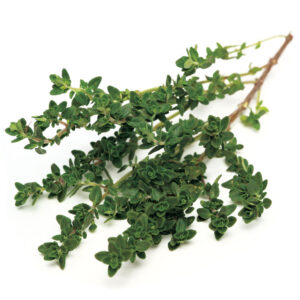Most essential oils have natural antiseptic properties because the plants from which they are extracted produce them to protect themselves from invading micro-organisms. Tea tree is one of the best known and most versatile essential oils with powerful antiviral, antibacterial and antifungal properties, yet it's gentle enough to treat children.
Treating infections
Antibacterial oils can be used for a number of treatments. A cold compress with a few drops of thyme or lavender, for example, can be applied to cuts and grazes. Urinary infections respond well to aromatic bathing while chest rubs, dry and steam inhalations can be used to treat viral colds and symptoms of flu.
Skin infections require gentler antiseptic action. Lavender and tea tree are ideal as these are the only oils that should be applied neat to spots.
Sources of Antiseptic Essential Oils
Antiseptic essential oils can be extracted from citrus fruits and Mediterranean herbs. Natural antiseptics can also be found in the resin, leaves and twigs of many trees. Members of the labiate family, including most of our familiar garden herbs, are also a source of antiseptic oils. Examples of these include thyme and sage, which are particularly pungent, and rosemary, which has a sweet aroma.
Aromatic Antiseptics
Bracing, fresh and camphorous, the scent of tree oils from eucalyptus, pine and tea tree share similar properties though they come from different parts of the world. The stimulating, pungent odour of these oils indicates their powerful antiseptic action. In contrast, the antiseptic oils derived from citrus fruits all share fresh and zesty frangrances, while the deep, woody perfumes of resinous frankincense and myrrh have long-lasting aromas that also disinfect.
Key to Antiseptic Oils
The many active constituents in antiseptic essential oils work to provide them with powerful germicidal properties and also lend them distinctive aromas.
Thyme
High concentrations of phenols thymol and carvacol give thyme its germicidal action.
Sweet thyme is low in phenols.
Thymol and carvacol are also irritants, so use thyme oil sparingly.

Pine
Rich in monoterpenes such as pinene and mycene, which give pine its deodorising and disinfectant properties. The needles and cones of pine give a clear refreshing oil.
Tea tree
Gentle and mild, tea tree is a powerful antiseptic oil, due to its active constituents of monoterpenes, cymene and terpineol. Tea tree is an effective antiseptic oil that can be applied neat.
Eucalyptus
There are more than 500 species of eucalyptus that yield essential oils useful for disinfection. All have bacteriostatic activity and anti-infection properties. Eucalyptus's potency differs between species.

Lemon
Lemon's antiseptic action is due to its principal component, limonene. The oil is a popular choice for household cleaners. The aldehydes in lemon give it a light, citrus scent.
Benzoin
Rich and resinous, benzoin is especially rich in esters such as benzyl benzoate, which are antiviral and provide a sweet, floral scent. Benzoin is a gentle treatment for urinary and skin infections.
Cajeput
Cajeput's antiseptic properties are due to its active constitents of terpineol and terpenes. Cajeput's scent is sweet and penetrating.
Antiseptic Blends
First aid treatment
Treat minor cuts and abrasions with a cooling antiseptic compress:
- 2 drops lavender
- 6 drops tea tree
- 2 drops thyme
Urinary infections
Add gentle antiseptic oils to a warm bath for healing relief from cystitis:
- 2 drops benzoin
- 2 drops juniper
- 5 drops rosemary
Cold and flu
Massage a blend of antiviral essential oils onto the throat, neck and chest to combat respiratory infections:
- 3 drops eucalyptus
- 2 drops lavender
- 3 drops rosemary
- 30ml carrier oil
Natural fumigation
Prevent the spread of coughs and colds at home or work by fumigating rooms with a fine mist spray. Dilute the oils in 50ml of water:
- 5 drops eucalyptus
- 5 drops lemon
Constituents of Antiseptic Oils
Most constituents of essential oils have some degree of antiseptic activity, but those rich in the following compounds are considered to be particularly germicidal.
Monoterpenes
Abundant in most distilled oils, these are bacterial and antiviral.
Alcohols
These have valuable anti-infection properties.
Phenols
Oil rich in phenols need to be used sparingly as they can cause skin irritations.